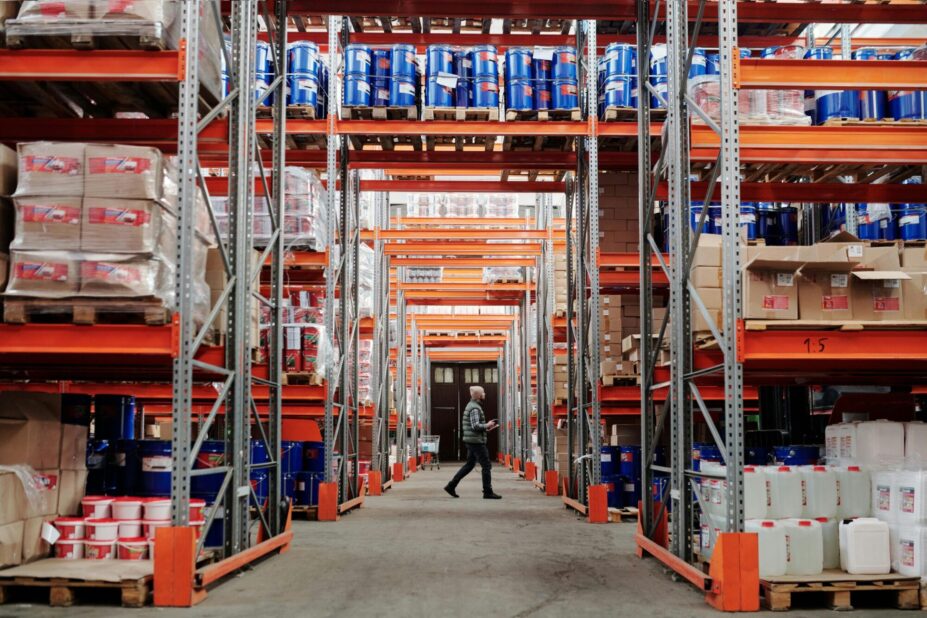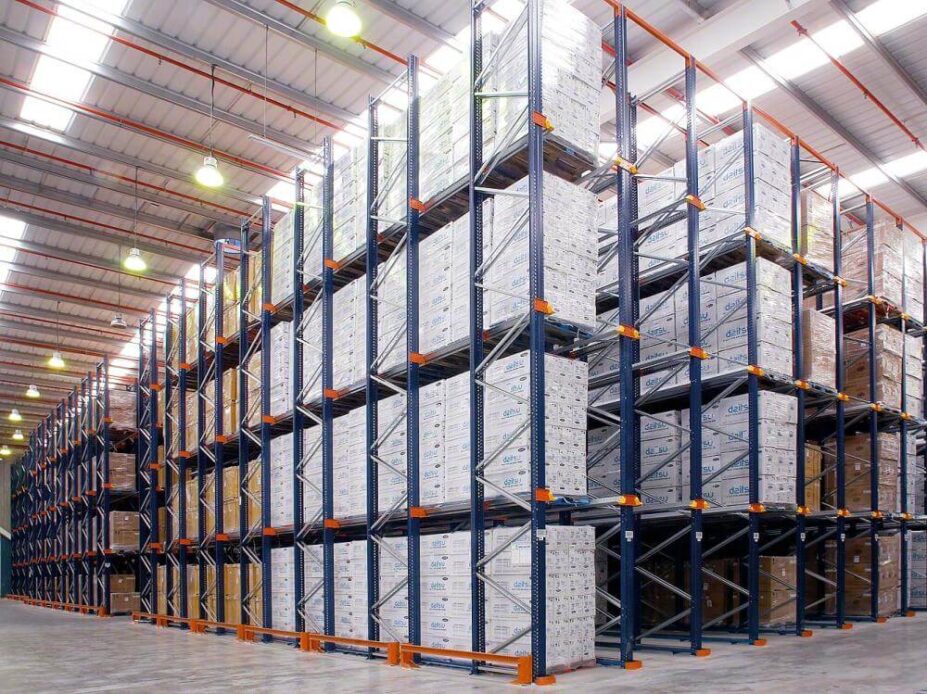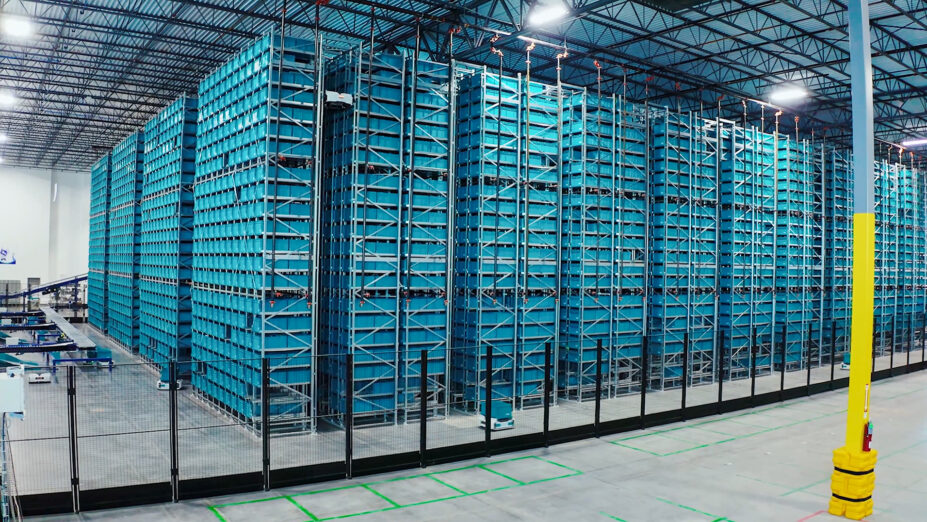Racking systems are the backbone of efficient warehouse operations, playing a crucial role in optimizing space and enhancing organizational efficiency. As the primary framework for storing inventory, understanding the various types of warehouse racking is essential for maximizing both vertical and horizontal space within a facility.
Over time, the evolution of racking systems has kept pace with the changing needs of warehouses, adapting to accommodate a wider range of goods, increased automation, and the need for more storage solutions. This introduction to racking in a warehouse sets the stage for exploring how different systems can meet diverse operational demands, ultimately guiding the selection of the most effective racking system for warehouse optimization.
Different Types of Warehouse Racking

Selective Racking
In selective racking, pallets are stored on horizontal beams that are held in place by vertical frames. These frames are typically spaced apart at regular intervals to accommodate the size and weight of the stored goods. Selective racking is the most popular warehouse storage solution, providing access to individual pallets without the need to move others. This makes each pallet highly visible and easy to load and unload.

Drive-In/Drive-Thru Racking
Drive-In racking offers a space-efficient solution by allowing forklifts to load and unload items from only one side, facilitating a last-in, first-out (LIFO) inventory approach. This system is particularly beneficial for storing large volumes of uniform items optimizing space by eliminating multiple aisles.
Drive-thru racking, on the other hand, allows forklift access from both ends of the racks, supporting a first-in, first-out (FIFO) inventory system. This setup is advantageous for items requiring strict rotation, like perishable goods, though it necessitates an additional aisle for through access, slightly reducing space efficiency compared to drive-in racking.

Pallet Flow Racking
Pallet flow racking leverages gravity to automate stock rotation, following a first-in, first-out (FIFO) principle. Pallets are loaded from one end and glide down inclined rollers to the retrieval end, ensuring that the oldest stock is accessed first. This method is especially critical in the food and beverage industries for managing perishable goods, optimizing inventory freshness, and significantly reducing waste by preventing goods’ expiration.

Push Back Racking
Push Back Racking enhances warehouse storage efficiency by allowing pallets to be stored 2-5 deep, accessible from the same aisle. It utilizes nested carts or trays on inclined rails within the rack structure. Loading a new pallet pushes previously loaded ones back along the rails; hence the name “push back.” This setup optimizes space and facilitates easy access to diverse SKUs, which are ideal for environments with high volumes of the same item, such as retail and wholesale.

Double deep storage racks within an Exotec Skypod system
Double Deep Racking
Double Deep Racking is designed to enhance storage by stacking one inventory set behind another, thus doubling the storage capacity within each aisle. While this method significantly increases space utilization, it necessitates a careful balance between density and access, as items at the rear take more time to reach. This system is particularly effective in sectors where consistent product types are stored and accessed at a steady, manageable rate, allowing for efficient use of warehouse space without drastically impacting the flow of goods or operational efficiency.

Cantilever Racking
Cantilever Racking is tailored for storing and accessing long, bulky items like lumber, pipes, or furniture. It features upright columns with horizontal arms extending outward, creating storage levels without front vertical uprights. This open design allows for easy loading and unloading using forklifts. This racking solution is advantageous for hardware stores and manufacturing facilities, providing flexibility and space efficiency for handling and storing oversized products.
Mobile Racking
Mobile racking systems optimize warehouse space by mounting shelves on movable bases that glide along tracks. These bases can be compacted together, maximizing storage density. This design is particularly beneficial in environments like cold or archival storage, where maximizing space is essential. The ability to easily reconfigure the layout and access stored items makes mobile racking a versatile solution for efficiently utilizing available floor space, ensuring that warehouses can adapt to varying storage needs while keeping their inventory accessible and organized.
Look Beyond Conventional Racking

The Skypod system offers modular, high-density storage racks
Maximize your warehouse’s efficiency and adaptability for growth by looking beyond conventional racking. Automated Storage and Retrieval Systems (ASRS), like the Exotec® Skypod®, are key to future-proofing operations.
The Skypod system increases storage density by up to 5X compared to conventional storage solutions, using robots that climb racks up to 39 feet tall. Its unmatched flexibility allows it to adapt seamlessly to changing order profiles, SKU proliferation, and shifts between B2B and B2C fulfillment with the ability process pieces and cases.
Take a virtual tour to see how the Skypod system can transform your warehouse.
Featured In
Share
Insights
-
April 15, 2025Top Warehouse Trends for 2025: Future of Automation
-
April 9, 2025Material Handling: Basics, Benefits, & Automation
-
April 4, 2025Complete Guide to Pick-and-Place Automation
News
-
April 16, 2025Exotec achieves SOC2 Type 2 Compliance, just months after obtaining ISO/IEC 27001:2022 Cybersecurity Certification
-
March 24, 2025Exotec Showcases Next-Gen Skypod System at ProMat 2025
-
March 17, 2025Exotec Announces Partnership with Oxford Industries to Implement Next Generation Skypod System in New Multi-Brand Distribution Center
Events
-
May 7, 2025Exodinner: Indianapolis, IN
-
May 22, 2025 | Cincinnati, OHExotour: Cincinnati, OH
-
May 28, 2025Exodinner: Vancouver, BC